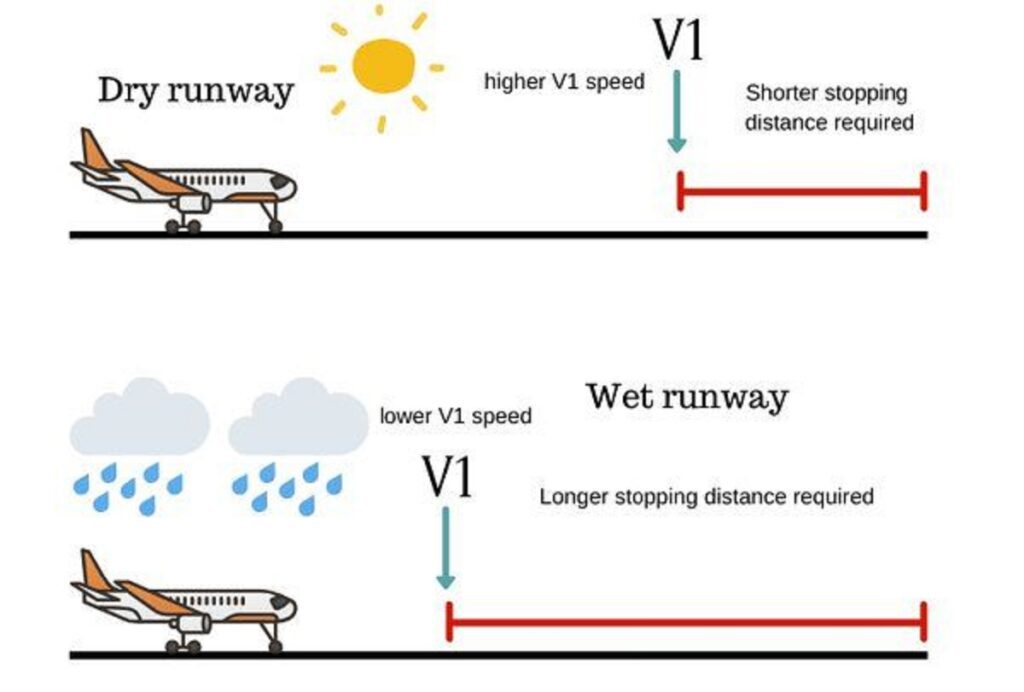
V1, or the takeoff decision speed, holds critical importance in aviation, especially on wet runways where safety considerations become paramount. This speed represents the point below which pilots can opt to abort the takeoff in the event of an engine failure or other major issues during the takeoff roll. Beyond V1, regulatory standards mandate that the takeoff must continue.
Wet runways introduce challenges due to reduced braking action. Consequently, lowering V1 provides pilots with a more significant margin to brake and halt the aircraft in a rejected takeoff scenario. Reducing V1 in these conditions impacts takeoff performance in several key ways:
1.Increased Takeoff Distance: Wet runway conditions necessitate a higher engine failure speed assumption, meaning the aircraft must accelerate to the calculated rotation speed (VR) with one engine inoperative. Given the lower acceleration with a single engine, more distance is needed to reach the rotation speed. Consequently, this increases the overall takeoff distance required and extends the total field length needed for takeoff.
2.Reduced Accelerate-Stop Distance: Surprisingly, the accelerate-stop distance (the distance required to stop the aircraft) is reduced when compared to a takeoff on a dry runway under the same aircraft and external conditions. This is due to the expectation of engine failure at a lower speed on a wet runway. As a result, the aircraft has less acceleration and momentum when the pilot initiates braking to halt the aircraft.
3.Consideration of Reverse Thrust: Unlike dry runways, regulatory standards account for the use of reverse thrust on wet runways. This inclusion enhances the aircraft’s stopping capability, as braking efficiency is diminished on a wet surface.
4.Lowered Screen Height: For takeoffs on wet runways, the screen height (obstacle clearance height) is reduced from 35 feet to 15 feet. This reduction minimizes the impact on the aircraft’s payload-carrying capacity on wet runways.
However, it’s essential to note that there is a limit to how much V1 can be reduced, and this limit is dictated by VMCG, the minimum control speed with one engine inoperative. Going below this speed is unsafe because reduced airflow over the rudder makes it impossible to control the aircraft with one engine out. Therefore, this constraint places a limitation on how much V1 can be reduced to enhance takeoff performance on wet runways.
Author – Nischal Paudel
Pilot






